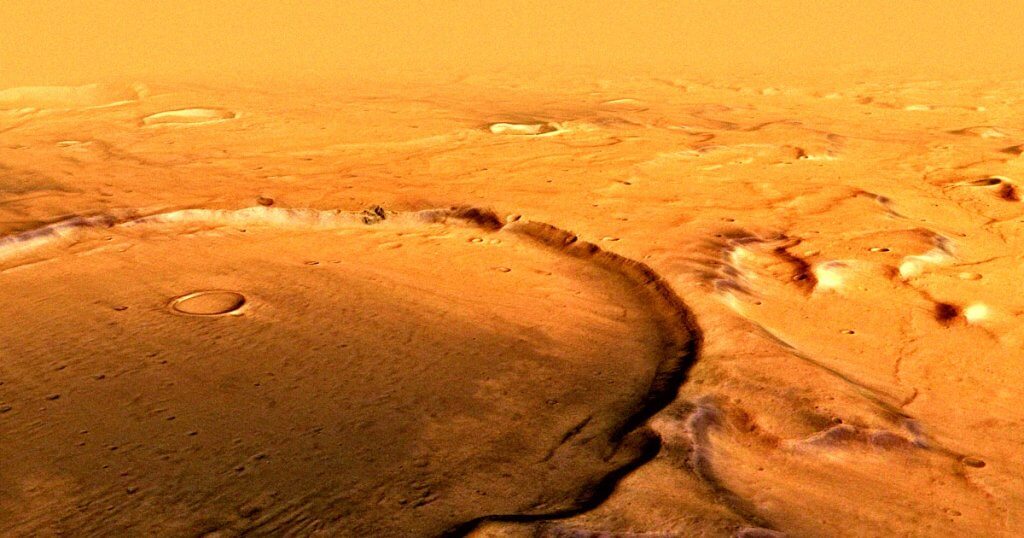Here’s how.
Deep Impacts
A team of scientists at NASA’s Jet Propulsion Lab in California have found that a single meteorite was likely responsible for creating not just one, but billions of subsequent craters on the Martian surface.
In addition to the main 2.3 million-year-old crater called Corinto, which spans over 8.6 miles across, the collision created several billion secondary craters by sending up a huge plume of rocks after it hit the surface, New Scientist reports. These rocks then triggered a chain reaction, adding even more craters as they came crashing back down.
By analyzing satellite images, JPL’s Matthew Golombek and colleagues estimated the number of craters triggered by the blast and concluded that Corinto had anywhere between 1.3 and 3 billion “secondaries,” each of which at least 33 feet across.
The research could help us understand complex geological processes on the surface of Mars and how its landscapes and composition have changed over time — a particularly important area of inquiry, given our efforts to send astronauts there in the near future.
Falling Rocks
The area pockmarked by the billions of craters is absolutely massive, spread out across 540,000 square miles — which coincidentally includes the landing spot of NASA’s InSight Mars lander.
“Quantifying the number of secondaries is important to better understand how a relatively small crater could possibly eject that much material during the cratering process,” Golombek told New Scientist.
Other, far more recent meteorite impacts have led to equally fascinating discoveries. In 2022, InSight detected a massive marsquake — the planet’s equivalent of an earthquake — which turned out to be the result of one of the biggest observed meteors to have struck Mars, some 2,000 miles away from the lander.
The impact was so powerful, in fact, that it blasted up chunks of underground ice.
More on Mars: Obama Slams Plan to Escape Earth by Colonizing Mars
Share This Article

